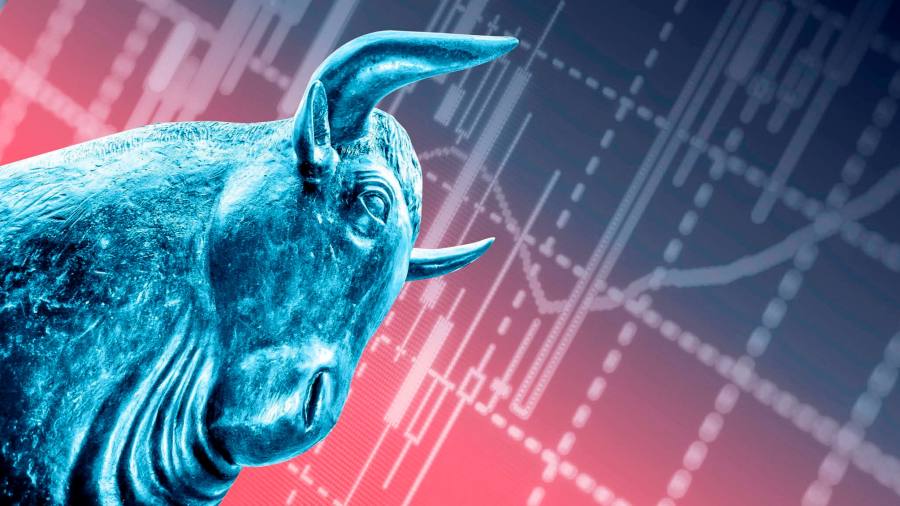Receive free Netflix Inc updates
We’ll send you a myFT Daily Digest email rounding up the latest Netflix Inc news every morning.
Good morning. Netflix’s freeloader crackdown paid off in the second quarter, driving nearly 6mn new sign-ups. Even that wasn’t enough to impress the market. A miss on revenue pushed the stock down 8 per cent after the close. The story at Tesla looked similar: decent earnings growth was undermined by pinched margins and the stock fell 5 per cent after-hours. The decline in these two superstar stocks is especially striking put against the largely happy market backdrop, more on which below. Email us: [email protected] and [email protected].
Risk on!
In the past few weeks, investors’ attitude towards the 2023 rally has flipped from disdain to admiration. Waves of good economic news have turned an unpopular, narrow bear market rally into a broad rally backed by strong sentiment.
It’s not just last week’s encouraging inflation report. Economic data has consistently beat out expectations. The Citi Economic Surprise index hit a two-year high yesterday, historically a positive omen for stock returns.
Omens aside, the simple fact is that the S&P 500 is up almost 20 per cent this year, and the rally’s foundations look increasingly solid. What began this spring as a lopsided bounce in the magnificent seven tech stocks has, since early June, spread out. After months of top-heaviness, the equal-weight S&P 500 has recently edged ahead of its market-weight cousin. The chart below shows the ratio of the two indices this year:
Wider participation in the rally is coinciding with better sentiment about it. The weekly AAII survey of individual investors, which has been stuck in negative territory since late 2021, is suddenly strongly positive. The chart below shows the share of investors feeling bullish less those feeling bearish, on a four-week rolling average:
Back in mid-May, when the market was immobile, the only consistent sources of equity demand were corporate buybacks and algorithms. That has changed. Discretionary investors have jumped back into the mix, note Deutsche Bank’s investor-positioning gurus, Parag Thatte, Binky Chadha and Karthik Prabhu. The rise in discretionary participation in the past month or so is “comparable to those seen after the vaccine announcement in late 2020 and the 2016 presidential election”, they write in a recent note. Across measures they track — including hedge fund market exposure, options market pricing and retail investor activity — investors are the most aggressively positioned they’ve been since early 2022:
Perhaps the most remarkable recent turnaround in sentiment is in the regional banks that performed the very worst when Silicon Valley Bank and First Republic failed. Western Alliance, Comerica, KeyBank and Zions, which attracted negative attention in March for their large securities losses or concentration of uninsured deposits, or both, have all rallied by 25 per cent or more since the first week of July.
Meme stocks and speculative tech are all having a grand time, as well. Since June, the Roundhill Meme and Ark Innovation ETFs are up 35 per cent and 25 per cent, respectively. Several of the names in the meme-stock fund are pure-play crypto stocks, which have gained from a bitcoin bounce this year.
One interesting point of contrast to the revelry in equities is the Treasury market. Ten-year yields jumped above 4 per cent to start July, but that much-discussed move has fully reverted. Across the curve, yields are trading about where they were pre-SVB. As we wrote last week, the bond market may be waiting for clearer signals of where this rates cycle is headed before making any big moves.
But quiet Treasuries aside, financial conditions elsewhere are loosening substantially. Corporate credit spreads are tightening, the dollar is weakening and stocks are rallying while equity and bond volatility indices remain low. The Chicago Federal Reserve national financial conditions index is at its loosest since early 2022.
The strong performance of asset prices will feed into consumer demand. Last Friday’s University of Michigan consumer sentiment survey offered a taste of this. The preliminary July numbers showed a huge monthly gain in consumer confidence, putting the index at a two-year high. But as David Rosenberg, the strategist, points out,
The jump in consumer finances is purely an asset [appreciation] story — the share of respondents stating their optimism was due to rising wages (27%) or lower debt (3%) were both unchanged. Those that feel their finances are better off due to rising asset prices has doubled in the past two months — from 3% in May, to 5% in June, to 7% currently in July. Moreover, the mean probability of higher stock prices a year out rose to 55.1% from 52.5%, the highest since April 2022. So, gains in asset prices, and expectations they will continue to rise, are emboldening the consumer.
The dark side of the rally in both prices and sentiment is, of course, that it will give sagging inflation a second wind — or, at the very least, make the Fed worry seriously about that possibility. It does look more and more likely that the post-Covid inflationary burst was first caused by a supply shock rather than excess demand. But inflation has become entrenched in demand, and so loose financial conditions and euphoric sentiment could help perpetuate it. Investors are loving the rally. The Fed has no choice but to hate it.
This dynamic — rising risk appetite in the foreground, the shadow of inflation and a hawkish Fed in the background — will make the remainder of this second-quarter earnings season interesting to watch. When expensive, much loved stocks such as Tesla and Netflix post imperfect results, we will discover how much deep the positive sentiment really runs. (Wu & Armstrong)
Two good reads
Danny Leigh reviews Barbie and Oppenheimer.
Read the full article here



